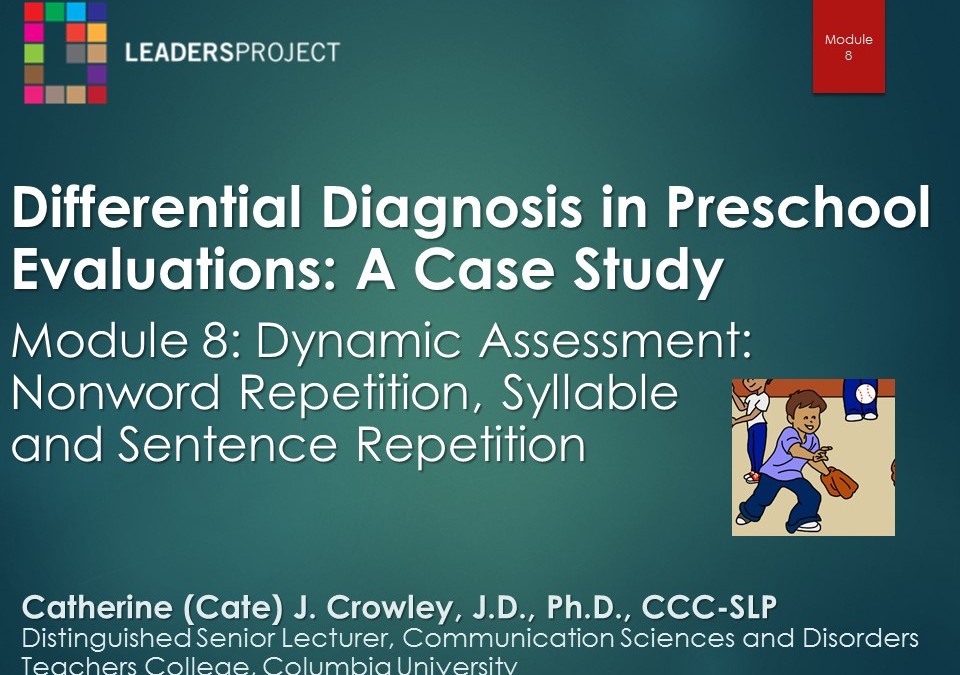In this module Cate discusses using dynamic assessment using repetition of nonwords, sentences and syllables (Dollaghan & Campbell, 1998) to help confirm Alex’s diagnosis of developmental apraxia.
Alex’s variable productions and distortion during non-word repetition indicate that apraxia is indeed the likely diagnosis. Cate considered other possible diagnoses (selective mutism and second language acquisition) before confirming apraxia as the source of Alex’s communication difficulty. As with previous modules, Cate indicates where the information gathered would go in the final evaluation.
Find resources used throughout this playlist here:
Model Eval: 2;10-English/Spanish- Verbal Apraxia
Model Eval: 2;10- Verbal Apraxia IEP Goals
Nonword Repetition and Child Language Impairment
Nonword Repetition Assessment Task
Find the playlist for the full set of videos in this module series here:
Differential Diagnosis in Preschool Evaluations: A Case Study (DDPE Playlist)
Find each of the modules from this playlist here:
Module 1: Why an Accurate Differential Diagnosis Matters
Module 2: Critical Questions for the Parent Interview Part 1
Module 3: Critical Questions for the Parent Interview Part 2
Module 4: Academic Language Expressive and Receptive Language
Module 5: Receptive Language Comprehension and Following Directions
Module 6: Eliciting Quality Narratives in Expressive Language
Module 7: Motor Speech, Articulation, and Speech Sound Inventory
Module 8: Dynamic Assessment: Nonword Repetition, Syllable and Sentence Repetition
Module 9: Putting it All Together in the Written Evaluation Report
Module 10: Developing Appropriate Goals for the IEP
Please find links to research mentioned in this module here:
Dollaghan, C., & Campbell, T. F. (1998). Nonword repetition and child language impairment. Journal of Speech, Language, and Hearing Research, 41(5), 1136-1146.
Harris, H. F. (1996). Elective mutism: A tutorial. Language, Speech, and Hearing Services in Schools, 27, 10-15. http://lshss.pubs.asha.org/article.aspx?articleid=1780095
Preston, K. (2014). When a child goes silent. The ASHA Leader, 19, 34-38. http://leader.pubs.asha.org/Article.aspx?articleid=1921108


![[feed link]](/wp-content/plugins/rss-just-better/rss-cube.gif)